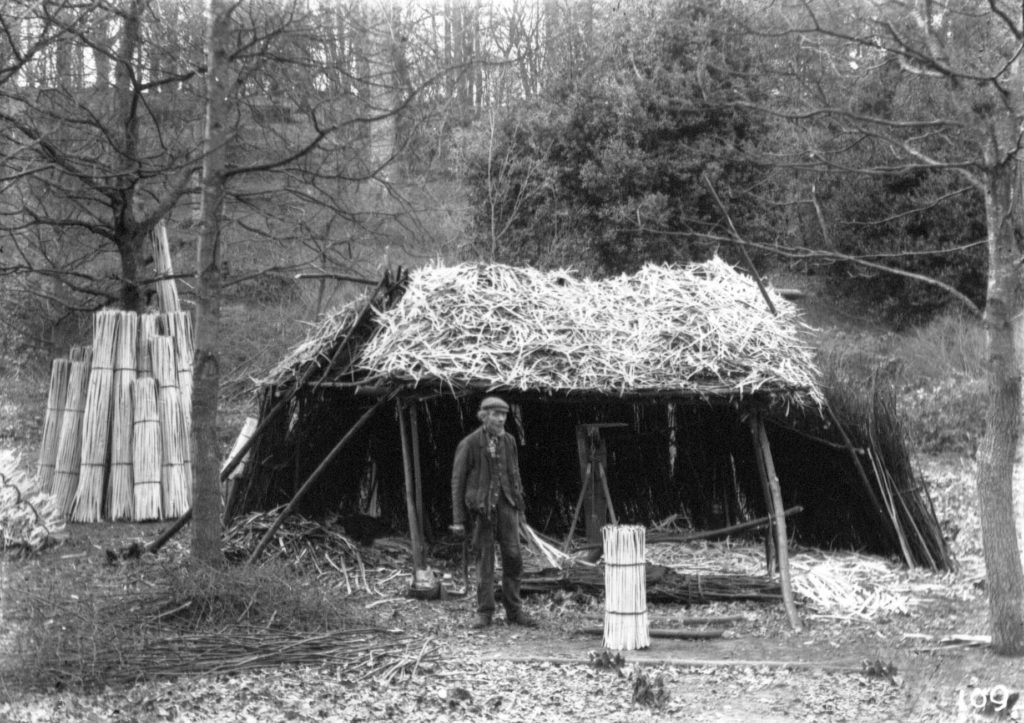Surrey – a county of rural peasants?
Today, Surrey is perceived as being one of the wealthiest counties in the country and it is difficult for many of the current generation to appreciate that this is a modern phenomenon. If we look back to the early 19th century, rural Surrey was predominantly a peasant population. Yes, as you can read elsewhere, there were wealthy land owners but these were the exceptions who held considerable power over the labourers who worked their land.
Reading the literature you will find little mention of Surrey as an agricultural county – mainly because its produce was insignificant compared to the larger, more productive counties elsewhere. However, the majority of the rural population here was involved in some way with agriculture and its associated trades.

A typical labourer would work for a farmer – who might himself be a tenant of a wealthy landowner. The labourer would generally rent his accommodation from the farmer and in most cases, tenancy went with the job. If he lost his job he tended to lose his home as well. In addition, if he were ill or had an accident so that he couldn’t work, he got no pay – so would struggle to pay his rent. Thus, all the power was with the farmer and the labourer was close to being tied to him. This meant that farmers could pay very low wages whilst ensuring the labourers worked extremely long hours. In general, the entire family, including very young children, had to work in order to obtain even a subsistence living. As late as 1867, labourer’s weekly wages varied from 12 shillings (60p) in western Surrey, to 15 shillings (75p) in the neighbourhood of London.
As stated at the time by a West Country parson, Canon Girdlestone, “How is it possible. on such wretched wages for a man to house, to feed and clothe not only himself but his wife and children; and to pay, in addition, the doctor and the midwife when their services were required; to provide shoes, fuel, light, such incidental expenses as school fees, and, in fact, many other items which cannot be enumerated, but which entered nevertheless into the cost of living.”
Although William Cobbett (a Farnham local) died just before Victoria’s coronation, he had spent many years trying to raise the issues of peasant conditions and pay. He was a thorn in the side of Government and authority but did much to highlight the iniquities of early 19th century farm labour. Frederick E Green and George Sturt were two other local writers who wrote extensively on this topic. They were both born in the 1860s and possibly gained a broader perspective on rural poverty since they were looking back over their lives which included the latter part of the century.

One of Sturt’s propositions was that the local peasantry had once been less poor and more self-sufficient and that the “enclosures” which occurred during the earlier part of the century had been a major cause of their decline. The peasants lost the land over which their cow, donkey, geese, fowls, or swine used to graze, and from which they derived fuel for the household, fodder for their beasts, and even corn for their daily bread. Thus, they only had their labour to provide for all their needs and, additionally, now had to purchase from that minimal amount all of those products which they could have obtained free prior to enclosure.
The situation towards the end of the century was exacerbated by general agricultural depression – partly driven by greater international trade in produce. The agricultural labour situation became unsustainable and many left the land to seek employment in towns. This depressed wages for unskilled labour and together with a doubling in population in the first 70 years of the century led to a complete rebalancing of rural versus urban employment. To highlight the change, in 1872 Surrey had 193,343 acres of arable land but by 1909 this had fallen 47% to 102,364 acres.

Some Victorians, however, did make good. Self-made entrepreneurs used their new wealth to rise in society, building large houses, educating their children and employing domestic servants (by the 1880s, 1.25 million people were employed in domestic service – more than in any other work category). That, I suspect was the origin of the current “wealthy Surrey” image. Having created their wealth in the urban areas, they then wanted to move out to greener, cleaner, more beautiful environments. And the rest, as they say, is history.
Ken Bare
Acknowledgements
- Deerleap Woods Wotton. Hoopshaver at his hut
- Milton Farm, Westcott
- Moving Barn @ Bookham
All 3 images courtesy of Keith Harding, Walter Rose/goodnessgracious.co.uk



